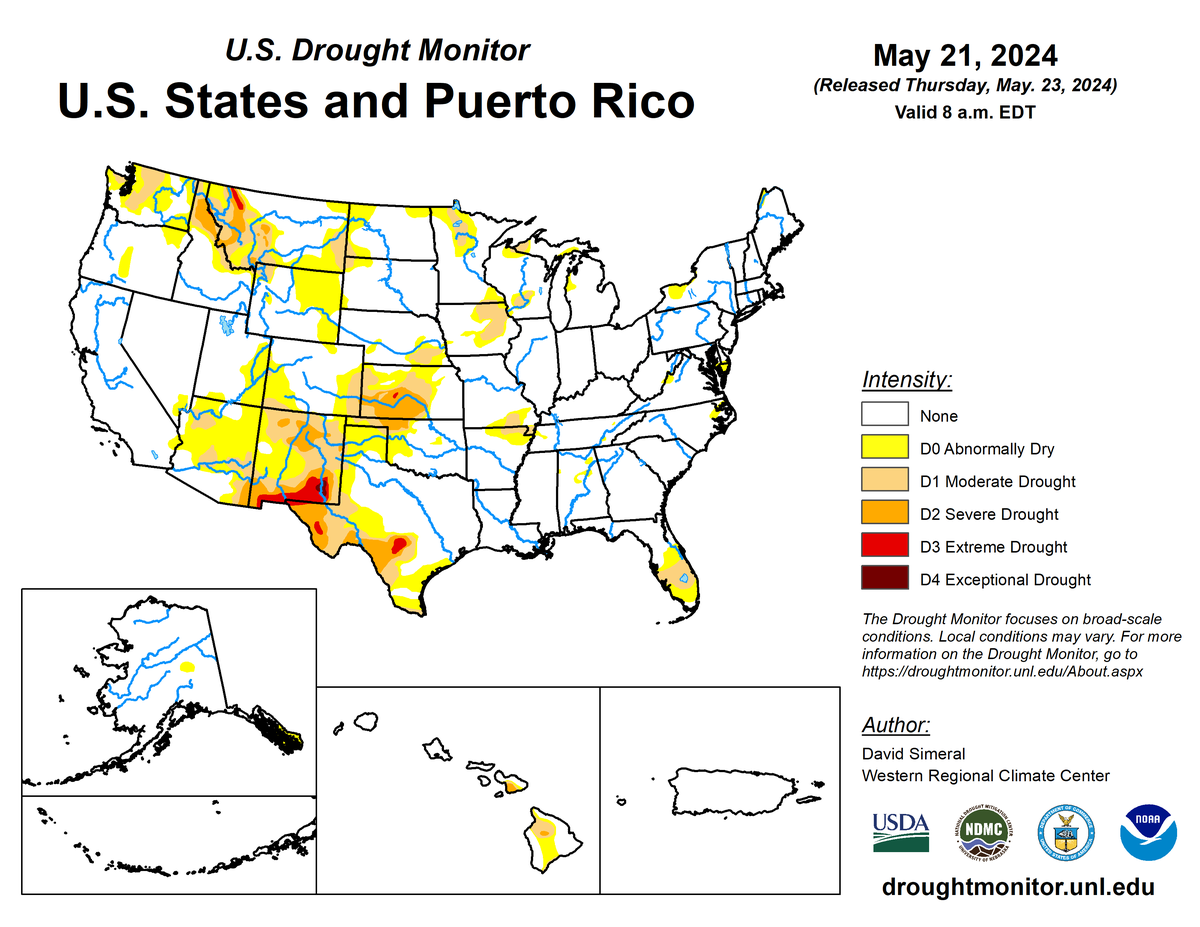
According to the May 21, 2024 U.S. Drought Monitor, moderate to exceptional drought covers 10.5% of the United States including Puerto Rico, a decrease from last week’s 11.7%. The worst drought categories (extreme to exceptional drought) decreased from 0.7% last week to 0.6%.
A generally westerly jet stream dominated the upper-level circulation over the contiguous U.S. (CONUS) during most of this U.S. Drought Monitor (USDM) week (May 15–21). An upper-level trough of low pressure began building over the western CONUS as the week ended. Several cold fronts and surface low-pressure systems moved through the upper-level flow. These systems tapped Gulf-of-Mexico and Atlantic moisture to spread above-normal precipitation across the Gulf Coast and Mid-Atlantic states, as well as parts of the Southwest and Great Plains to the Midwest. They also triggered multiple rounds of severe weather east of the Rockies.
Not all areas saw rain, so other parts of the CONUS east of the Rockies had a drier-than-normal week. Most of the West received little to no precipitation. Weekly temperatures averaged warmer than normal from the Great Plains to the Northeast, across the Florida peninsula, and parts of the Southwest, due largely to a southerly flow ahead of the fronts and surface lows but also because of a ridge of high pressure that developed over the eastern third of the CONUS near the end of the week.
The migrating cold fronts brought cooler-than-normal temperatures to parts of the Southeast, while colder-than-normal air began moving into the Northwest as the week ended. The above-normal precipitation contracted drought and abnormal dryness in parts of the Southwest, Plains, Mississippi Valley, Great Lakes, and Mid-Atlantic, while continued dry weather expanded or intensified drought or abnormal dryness over a few parts of Colorado, the central High Plains, and southern Florida. Nationally, contraction exceeded expansion, so the nationwide moderate to exceptional drought area decreased this week.
Abnormal dryness and drought are currently affecting over 39 million people across the United States including Puerto Rico—about 12.6% of the population.

The full U.S. Drought Monitor weekly update is available from Drought.gov.
In addition to Drought.gov, you can find further information on the current drought as well as on this week’s Drought Monitor update at the National Drought Mitigation Center.
The most recent U.S. Drought Outlook is available from NOAA’s Climate Prediction Center and the U.S. Department of Agriculture provides information about the drought’s influence on crops and livestock.
For additional drought information, follow #DroughtMonitor on Facebook and Twitter.



